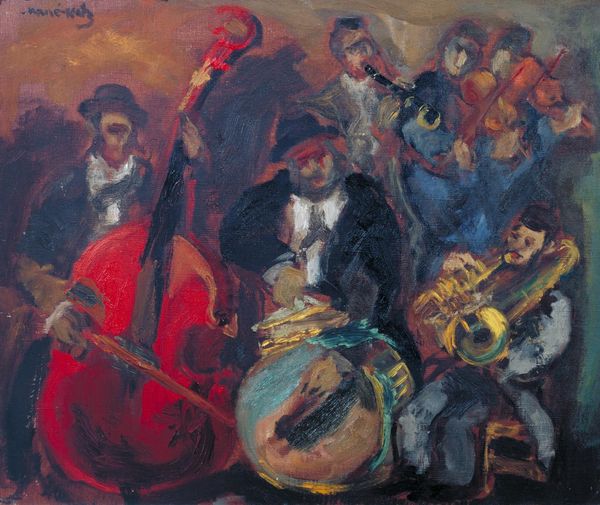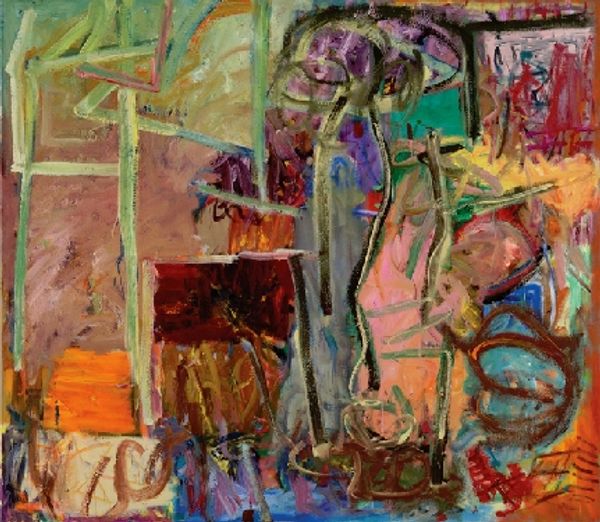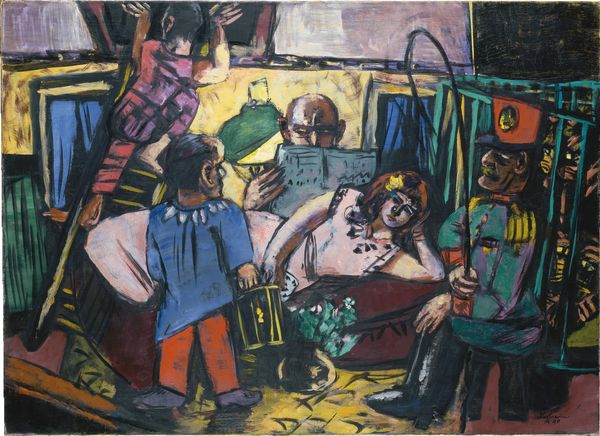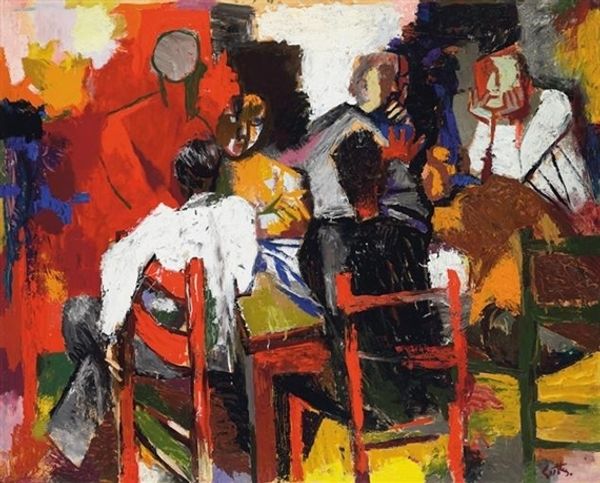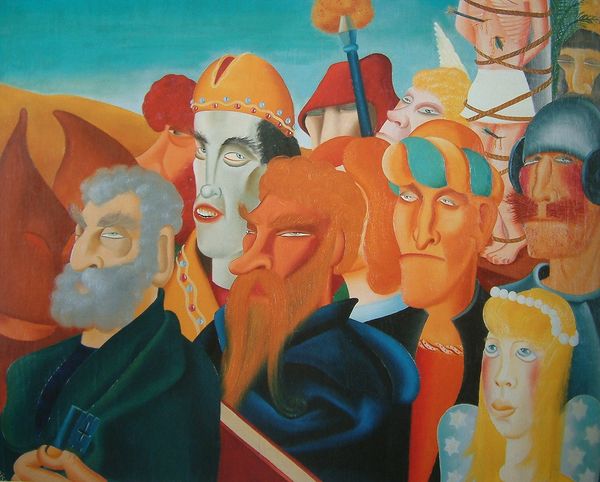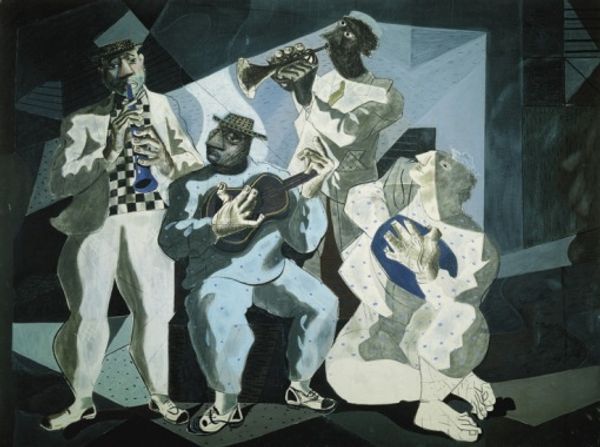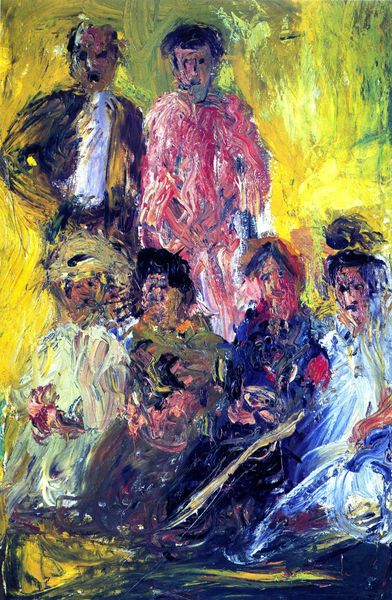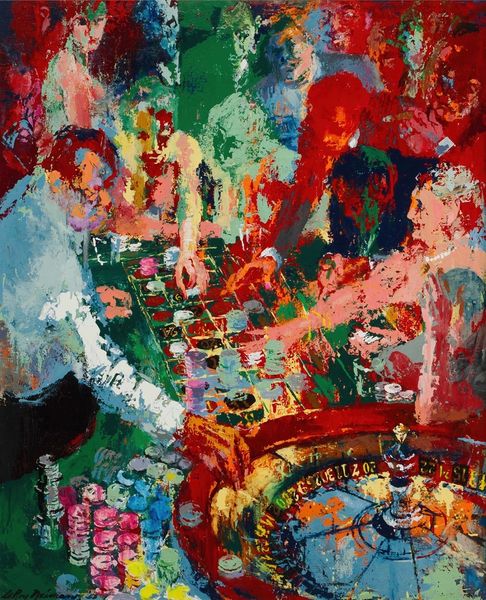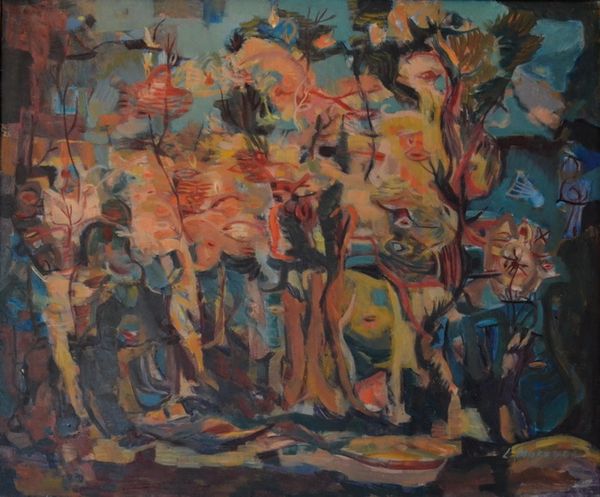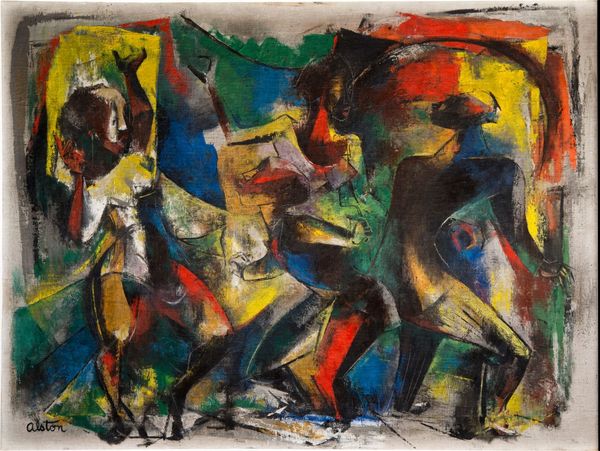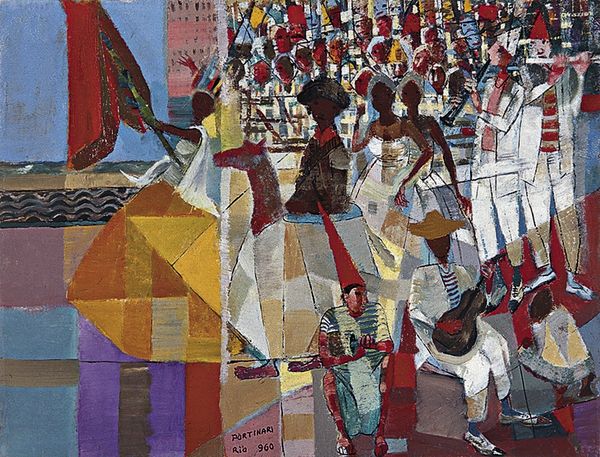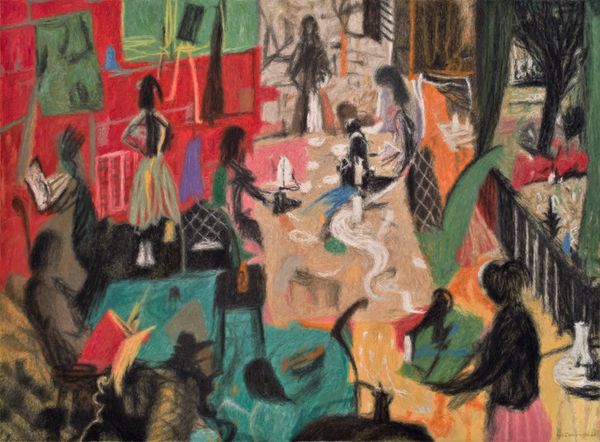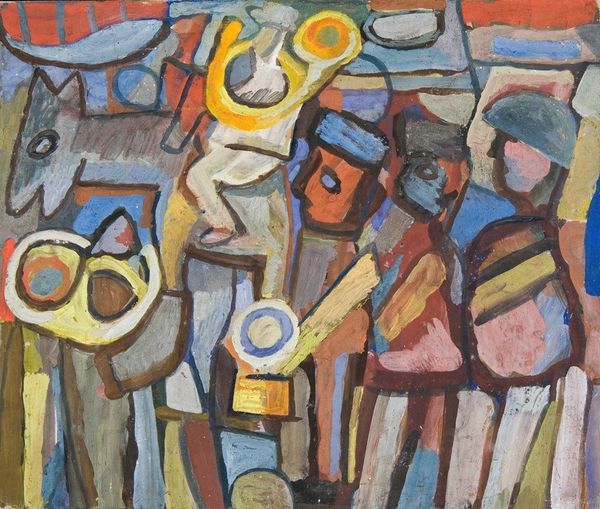
Copyright: Philip Evergood,Fair Use
Editor: This is "Music," an oil painting created in 1933 by Philip Evergood. It portrays a vibrant orchestra, and the sheer number of figures packed into the frame gives it a sense of boisterous energy. What's your interpretation of this work? Curator: The sheer act of creation, the process of layering oil paint to depict this scene of collective labor, immediately stands out. Look at the varied textures and brushstrokes Evergood employs. Each musician, each instrument is rendered with a distinct touch, highlighting the individual contributions to the overall sound, to the collective project. How do you see the choice of materials contributing to its social message? Editor: That’s an interesting way to look at it. The rough application of paint and the somewhat caricatured figures lend a populist, almost gritty feel, doesn't it? I hadn’t considered how the medium itself enhances that. Curator: Exactly. And consider the period: 1933, deep in the Depression. Doesn’t the raw, almost hurried application of paint, the focus on the working musician, speak to the urgency and realities of that time? Art wasn't simply about aesthetics, but also about survival and community. How might viewing it in this economic context shape our understanding? Editor: It completely shifts my perspective! I initially saw it as a lively, almost chaotic scene, but now I see the depiction of labor and community amidst hardship. It’s more than just a depiction of an orchestra. Curator: Precisely! By examining the material conditions of its creation and the social context it reflects, we uncover a deeper narrative beyond the surface image. It really showcases labor, materiality, and the value of collaboration during that period.
Comments
No comments
Be the first to comment and join the conversation on the ultimate creative platform.
